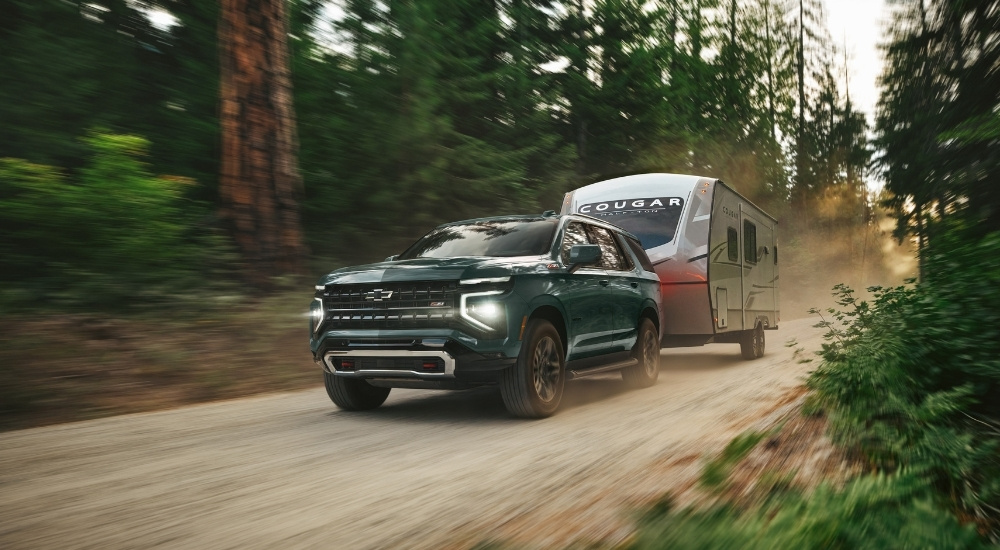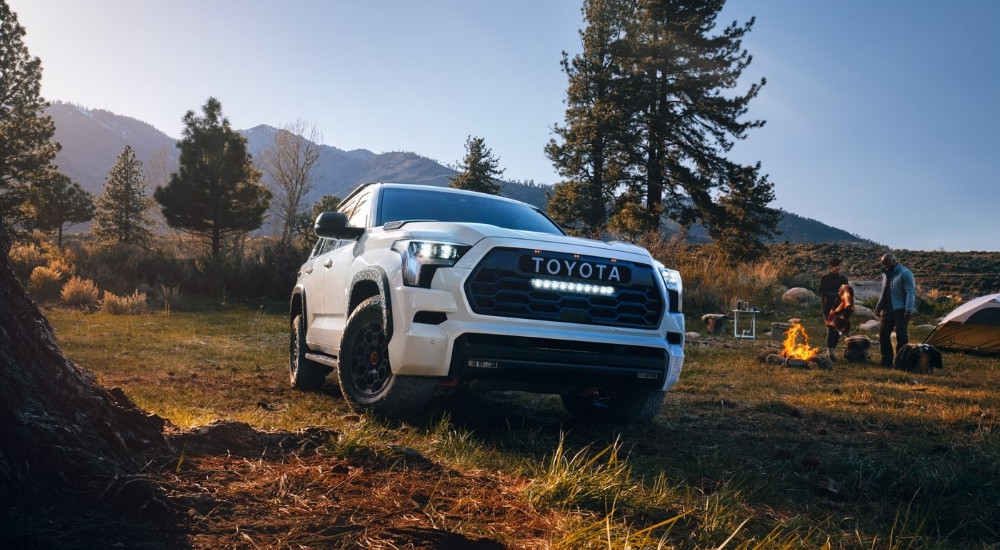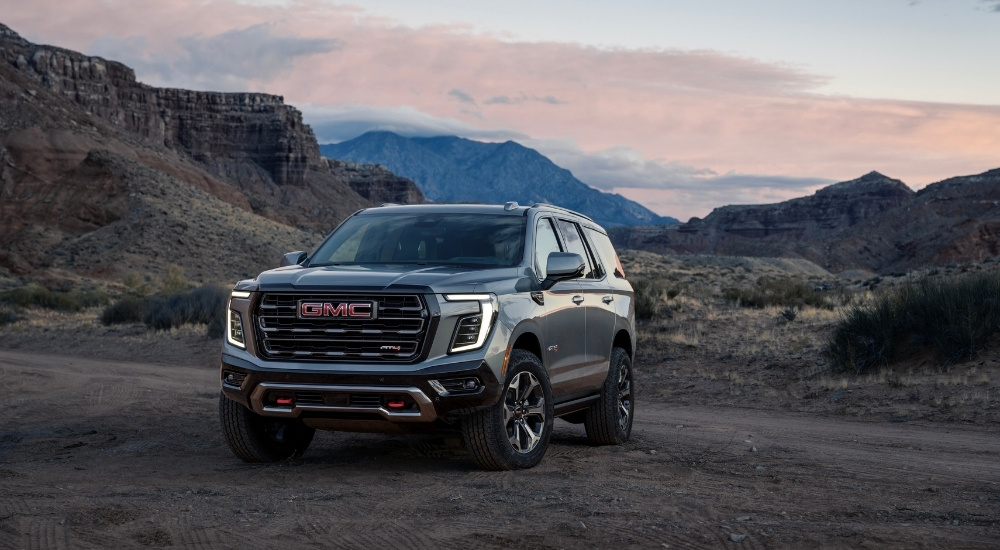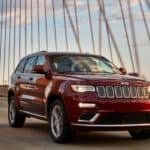
Off-road vehicle popularity has exploded in recent years, and the trend shows no signs of slowing down. According to Fact.MR, the worldwide market is forecast to reach $47.4 billion by 2033, more than double its 2023 value. A vehicle that can go anywhere appeals to the classic traits of ruggedness, self-reliance, and personal expression for people around the globe.
With sport utility vehicles accounting for nearly half of new vehicle sales worldwide, it’s no surprise the off-roading phenomenon has led to a surge in full-size off-road SUV models. Many full-size SUVs like the Ford Explorer and Chevy Suburban are now positioned as family vehicles in their base form. As such, the new off-road variants return to the SUV’s roots as a rugged do-it-all machine. You’ll now find plenty of off-road-specific SUVs in all sizes—not just from the usual suspects like Jeep and Land Rover but also from nameplates like Lexus, Mercedes-Benz, and Nissan.
Having so many options makes the decision process more challenging for potential buyers. Today, I want to look at five full-size off-road SUV models and see how they establish an identity in an increasingly crowded segment. Use this guide to see which vehicles you should have your eyes on when considering an SUV that’s adventure-ready straight from the dealership.
Ford Expedition Tremor
New for the 2025 model year, the Tremor is the first off-road variant of an SUV that has graced roads and trails since 1997. The Ford Expedition receives the Tremor treatment four years after the F-150, its best-selling pickup truck cousin. The changes start under the hood as the Expedition’s base EcoBoost 3.5L twin-turbo V6 engine is upgraded to a high-output version in the Tremor. This upgraded powerplant produces 440 hp and 510 lb-ft of torque versus the standard 400 hp and 480 lb-ft. From there, the suspension is re-tuned for off-road terrain and given a class-leading 10.6 inches of ground clearance.
Other changes to the Ford Expedition Tremor include:
- Electronic locking rear differential for traction.
- 33-inch all-terrain tires to improve grip.
- Two-speed transfer case for crawling and climbing.
- Revised power steering system for better responsiveness.
- Embedded front auxiliary lights to improve visibility.
- Rock Crawl mode for better torque delivery at low speeds.
- Trail Turn Assist and Trail 1-Pedal to simplify off-road driving.
Ford also adds extensive underbody protection, including a front skid plate and running boards based on the F-150 Raptor. The adventure-ready loadout is completed with stylish black upholstery, orange accent stitching, and Tremor badging.
Nissan Armada PRO-4X
Nissan joins the full-size SUV off-road fray for 2025 by giving the Armada a trim previously seen on the Frontier and Titan pickup trucks. Part of a complete third-generation redesign, the Armada PRO-4X uses the same all-new 3.5L twin-turbo V6 engine as the base Armada, giving pilots 425 hp and 516 lb-ft of torque—both big upgrades over the previous naturally-aspirated V8. Nissan has also switched from a seven-speed transmission to a nine-speed transmission. Everything sits on an electronically-controlled air suspension that is height adjustable for up to 9.6 inches of ground clearance. Although this isn’t as much as the Expedition Tremor, you’ll enjoy dropping the suspension for more on-road stability.
The Armada PRO-4X makes the most of its clearance with a redesigned front fascia that allows a 33-degree approach angle to skate over rocks and stumps. A set of 20-inch wheels with all-terrain tires, intelligent 4WD, a locking rear differential, tow hooks, and a skid plate are among the other features. Nissan also overhauled the onboard technology with off-roading in mind. The eight selectable drive modes include Snow, Sand, Mud/Rut, and Rock. You also receive Hill Descent Control, an off-road information display, and several unique camera views. The black and Lava Red accents are patterned after other PRO-4X vehicles.

Toyota Sequoia TRD Pro
As one of the original off-road SUV players, Toyota introduced this trim for the 2020 Sequoia, joining the 4Runner, Tacoma, and Tundra in the TRD Pro family. TRD stands for Toyota Racing Development, and the trim includes many modifications and changes made with high-performance driving in mind. Like the Armada PRO-4X, the Sequoia TRD Pro shares its engine with all Sequoia models. For the current generation, this means a 3.4L twin-turbo V6 hybrid powerplant that delivers 437 hp and an impressive 583 lb-ft of torque through an intelligent 10-speed automatic transmission.
While the engine remains the same, the suspension gets a big-time revamp. It sports FOX 2.5-inch internal bypass front shocks and remote-reservoir rear shocks, a heavy-duty front sway bar, and a locking rear differential. Crawl Control and Downhill Assist Control enhance the trail-friendly driving dynamics. From there, Toyota adds rugged BBS forged aluminum wheels with 33-inch Falken all-terrain tires and a front skid plate. The lighting gets a major boost as well with premium LED headlights, sequential LED turn signals, and an LED auxiliary light bar and marker lights. Like every automaker, Toyota adds style touches like a dual-tip exhaust and red TRD interior accents.
Chevy Tahoe Z71
Off-road diehards know the Tahoe Z71 has been around for a while. It was first released in 2000 as a special edition trim before being an option package for many years. In 2021, the Chevy Tahoe Z71 became a full-fledged trim again. The first place where the Tahoe Z71 stands apart is that instead of one option, buyers have a choice of three powerplants, all hooked to a 10-speed transmission:
- Option 1 is an EcoTec3 5.3L V8 engine with 355 hp and 383 lb-ft of torque for a mix of on-road and off-road driving.
- Option 2 is an EcoTec3 6.2L V8 engine with 420 hp and 460 lb-ft of torque for the best all-around off-road performance.
- Option 3 is a Duramax 3.0L I-6 diesel engine with 305 hp and 495 lb-ft of torque to provide added pull for rock crawling, hill climbing, and towing.
Other ways the Tahoe Z71 is outfitted for off-roading include an Autotrac two-speed transfer case, assist steps, a 34.5-degree approach angle, a heavy-duty air filter, front recovery hooks, multiple skid plates, and 33-inch Goodyear Wrangler Territory all-terrain tires. A separate Off-Road Capability Package includes several towing features plus a four-corner adaptive air suspension with Magnetic Ride Control and an electronic limited-slip differential (a mechanical LSD is standard).
GMC Yukon AT4
It’s no surprise the badge-engineered cousin of the Tahoe also has an off-road variant. The GMC Yukon AT4 was introduced the same year as the revived Chevy Tahoe Z71. But while there are similarities, such as the powertrain and tire options, there are some key differences to consider:
- Magnetic Ride Control is standard on the Yukon AT4.
- The Yukon comes with a different infotainment layout.
- The Yukon AT4 has more standard premium features.
The 2025 model year also sees the arrival of the Yukon AT4 Ultimate, which comes standard with the 6.2L V8 engine, air suspension, massaging front seats, Super Cruise hands-free driving, full-grain leather upholstery, and available Night Vision.

SUVs for Big Time Off-Roading
It’s clear each of these vehicles offers substantial off-road improvements over their on-road foundation. Many features, such as tow hooks and skid plates, seem to be industry standards, but each manufacturer has found a way to set its offering apart, such as the Tahoe Z71 with multiple engine options, the Expedition Tremor with high ground clearance, or the Sequoia TRD Pro with a hybrid powertrain.
The choice of which full-size off-road SUV you should buy may come down to which features you find most important. If all else is equal on the off-road side, consider comfort features like towing and seating capacity. By doing the proper homework, you’ll find a big SUV that becomes larger than life on the trails.



